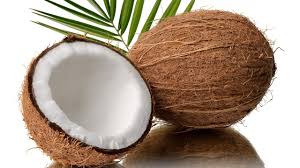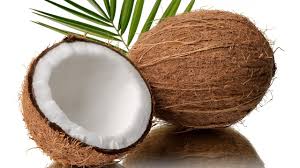 Pitta dosha is the biological energetic force that stems from the fire and water elements. It is hot, sharp, penetrating, and spreading by nature, and therefore any excess of this dosha will bring on similar qualities to the individual, eventually causing imbalance, disorder, and disease. According to Ayurveda, diet can be a powerful tool in treating and preventing disorders and disease.
Pitta dosha is the biological energetic force that stems from the fire and water elements. It is hot, sharp, penetrating, and spreading by nature, and therefore any excess of this dosha will bring on similar qualities to the individual, eventually causing imbalance, disorder, and disease. According to Ayurveda, diet can be a powerful tool in treating and preventing disorders and disease.
Read more about Pitta Dosha here!
Common Symptoms of a Pitta Dosha Imbalance
- Excessive heat in the body
- Inflammation in the body
- Rash, hives, urticaria
- Skin conditions such as eczema and psoriasis
- Acne
- Liver conditions
- Temporal headaches
- Acid reflux or heartburn
- Sharp, large appetite
- Hypoglycemia (low blood sugar)
- Hyper-metabolism
- Hypertension (high blood pressure)
- Easily irritated, frustrated, or angered
- Critical or judgmental
In Ayurveda, diet is a vital tool for fighting disease, preventing disease, and finding balance in your daily life. If you currently have increased Pitta in the system, here are some key dietary guidelines to follow:
Pitta Diet DO’s
- Pitta should favor the sweet, bitter, and astringent tastes in the diet.
- Make use of healthy, cooling oils. The best Pitta options are coconut, sunflower, and ghee.
- Cooling condiments can be used to cool a heat-inducing food. These include lime, cilantro, coconut oil, and aloe vera.
- Use cooling spices. The best spices for Pitta are: fresh ginger, fennel, coriander, turmeric, cardamom, cumin, cilantro, parsley, cloves, and mint.
- Sweet fruits are very good for cooling Pitta, including apples, sweet mangos, figs, dates, coconut, and avocado.
- Coriander, fennel, and cumin tea is great to sip on before a meal to balance the digestive fire without creating too much heat. Discover our CCF Tea recipe here!
- Coconut water, cucumber juice, or watermelon juice is a great way to reduce the Pitta and keep hydrated during the brutal summer months! Try our Cooling Cucumber Coconut Juice recipe!
- Eat on a consistent schedule. Here is a Pitta-specific eating chart: 7-8 am breakfast; 11-1 pm lunch; 6-8 pm dinner.
- Do NOT skip meals! Pitta types tend toward low blood sugar, and skipping meals can lead to shakiness, crankiness, and irritability.
- A small snack between meals is recommended; however, do not graze!
- Follow the proper Food Combining Guidelines.
Pitta Diet DON’Ts
- Avoid the sour, salty, and pungent (spicy-hot) tastes in the diet.
- Avoid fatty, fried foods.
- Avoid red meat and pork.
- Avoid nightshades, such as tomatoes, peppers, and eggplant. These increase heat and cause inflammation in the body.
- Avoid all citrus except for lime.
- Avoid fermented food and beverages with the exception of homemade yogurt and sweet lassi.
- Avoid nuts, especially when roasted and salted.
- Avoid heating oils, such as sesame, safflower, peanut, and almond.
- Avoid refined sugar, refined grains, and processed foods.
- Avoid caffeine, alcohol, and tobacco as these all create excessive heat and inflammation in the body.



Very practical and useful article
Thanks Ganeshababu! Namaste, Danielle
I suppose it’s the fact that “Like increases Like” that makes me think I need to eat more salty, spicy and caffeinated food items that I really need to avoid during the less cooler months. Thank you for sharing such enlightening and beneficial information, Danielle! Namaste
Thank you for taking the time to write in Alex! I am happy to hear this information is helping you (and your Pitta) stay in balance this summer. I hope all is well:)
Namaste,
Danielle
thank you
Thank you for all the free information on your website, it’s really useful. I made many of your recipes and loved them more than I thought I would.
I have a question about the food I should avoid as Pitta and that is fermented food. Does that mean avoiding kimchi and sauerkraut? I started a diet for candida and there is recommended. I also want to admit I like both.
Thank you for all the hard work you put out there for us.
Hi Milena,
Thank you for writing in! Fermented foods are generally Pitta-provoking, especially spicy ones such as kimchi. However, eating a small amount of a suitable fermented food each day to help with Candida or other forms of dysbiosis, can be beneficial, even for Pitta, assuming you can digest it and it does not cause negative symptoms (such as excessive heat, hyperacidity, gas, loose stools, etc).
If kimchi proves to be too heating, you can try less heating options such as sauerkraut or another fermented veggie that is not filled with garlic, onion, or hot peppers. They have some really tasty options at Pickled Planet. However, the least heating of all fermented foods would be a lightly fermented, homemade yogurt or kefir, whether it be a dairy or non-dairy milk base.
I hope this helps clarify things. Remember, that these lists are simply guidelines, but the most important factor will be how your body reacts to any specific food type.
Let me know if you have any further questions!
Many blessings,
Danielle
I am vegan, can I drink organic sugar free soya milk, eat plant based greek yoghurt, plant based fish and meats, as well as wholegrains. My dosha is pitta.
Hi Ms N,
Thanks for your question! Soy can be a bit heating, so you may want to choose coconut milk, homemade almond milk, or oat milk instead of soy milk. Plant-based Greek yogurt should be alright, although homemade (which is less sour and heating) and soy-free would be best for Pitta. Plant-based meats may or may not be suitable depending on their ingredients and how processed they are. Most wholegrains are suitable for Pitta, with the exception of corn, millet, and brown rice, which should be limited due to their mildly heating qualities (small amounts are typically fine). Refined grains should be avoided with the exception of Basmati rice on occasion.
If you are interested, you can read more details with my Pitta Diet Chart here.
Let me know if you have any further questions!
Be well:)
Namaste,
Danielle